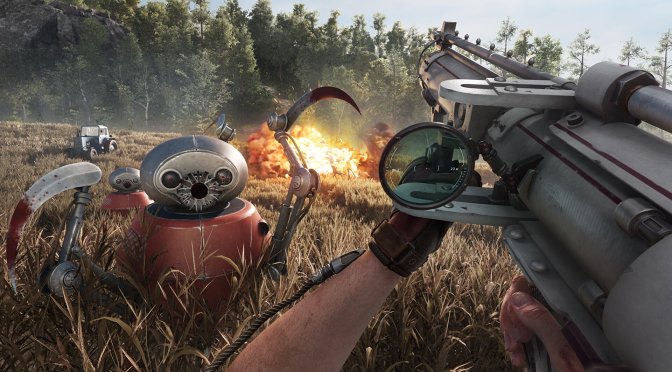A couple of days ago, Mundfish released a new update for Atomic Heart that added Ray Tracing effects to it. As such, we’ve decided to benchmark these RT effects on an NVIDIA GeForce RTX 4090. Do these RT effects significantly improve the game’s image quality? And are they worth the performance hit? Time to find out.
Mundfish has used Ray Tracing in order to enhance the game’s reflections and ambient occlusion. This is partially what the company was promising to implement in the game before its release. You see, Mundfish released an RTX Tech Demo for Atomic Heart which had ray-traced reflections and shadows. So, instead of using RT shadows, the team decided to go with RTAO.
To test these RT effects, we used an AMD Ryzen 9 7950X3D, 32GB of DDR5 at 6000Mhz, and NVIDIA’s GeForce RTX 4090. I also used Windows 10 64-bit, and the GeForce 555.85 driver. Moreover, I’ve disabled the second CCD on our 7950X3D.
Atomic Heart does not have any built-in benchmark tool. So, for our tests, we used this sequence. This custom benchmark scene has a big open-world area with lots of enemies. So, it should give us a pretty good idea of how the rest of the game performs.
Atomic Heart is powered by Unreal Engine 4 and while it has a shader pre-compilation procedure, it suffers from major traversal stutters. These traversal stutters can be more noticeable when gaming on higher framerates. To be honest, I don’t remember the game having such awful traversal stutters at launch. The point is that, right now, these traversal stutters are awfully annoying, even on a high-end CPU like the AMD Ryzen 9 7950X3D.
Without any Ray Tracing effects, the game runs with a minimum of 84fps and an average of 111fps at Native 4K/Epic Settings on the NVIDIA RTX 4090. As soon as we enable the RT effects (in Quality Mode), our framerates drop to 49fps/55fps. That’s a huge drop.
Now the good news here is that Atomic Heart supports NVIDIA DLSS 3. By enabling DLSS 3 Super Resolution Quality, we were able to get a constant 70fps experience. Then, by enabling DLSS 3 Frame Generation, we were able to further increase performance by up to 34%.
So, do these RT effects really justify the performance hit? Well, it depends. If you don’t own a high-end GPU, then no. On the other hand, if you can get 60fps with DLSS 3 at your preferred resolution when you enable these RT effects, then I see no reason why you shouldn’t be using them.
What’s important to note here is that the image quality of DLSS 3 is great in this title. For the most part, DLSS 3 Quality feels similar to Native 4K. With the game running at 70fps, there is also no noticeable input latency when enabling DLSS 3 Frame Generation. Thus, on an NVIDIA RTX4090, you will get a better gaming experience with DLSS 3 Q + FG and Ray Tracing. This way is more preferable to gaming at Native 4K without the RT effects.
Atomic Heart has a lot of reflective surfaces so you will see an improvement. However, it’s not a “transformative” improvement. While the game’s RTX Tech Demo looked impressive in 2019, it no longer does. I mean, it’s been five whole years since then. So, don’t expect anything like Alan Wake 2, Cyberpunk 2077 or most UE5 games that take full advantage of Lumen (like Hellblade 2).
Finally, I’ve included below a video that compares the RT and the non-RT versions of the game. So, be sure to watch it!

John is the founder and Editor in Chief at DSOGaming. He is a PC gaming fan and highly supports the modding and indie communities. Before creating DSOGaming, John worked on numerous gaming websites. While he is a die-hard PC gamer, his gaming roots can be found on consoles. John loved – and still does – the 16-bit consoles, and considers SNES to be one of the best consoles. Still, the PC platform won him over consoles. That was mainly due to 3DFX and its iconic dedicated 3D accelerator graphics card, Voodoo 2. John has also written a higher degree thesis on the “The Evolution of PC graphics cards.”
Contact: Email


